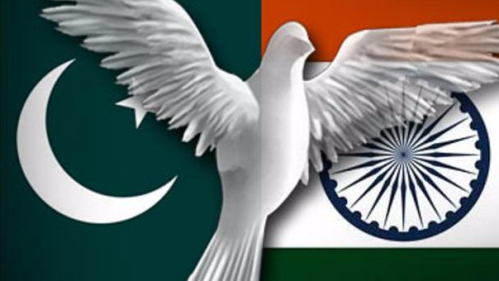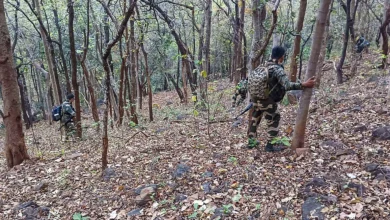Peace at last between India and Pakistan? Renewed ceasefire agreement implemented between the two warring neighbors.


The two adversaries India and Pakistan on 25th issued a joint statement to strictly observe all agreements on ceasefire along the LoC and other sectors, and to address “each other’s core issues and concerns”. It was their first joint statement in over eight years.
With over 4,600 instances of ceasefire violations (CFVs) by Pakistan recorded in 2020-the highest in under two decades, the backdrop of the second anniversary of the Pulwama attacks by terror state Pakistan and the retaliatory Balakote strikes, with the Indo-Pakistani ties in deep freeze since last 8 years this came as a surprise and shock to analysts.
It stated that the Director Generals of Military Operations (DGMOs) of the Indian and Pakistani armies had held talks this week to renew the peace process. It said both the countries agreed to “strict observance of all agreements, understanding and ceasefire along the Line of Control (LoC) and all other sectors with effect from midnight 24/25 February”.
However, people close to the geopolitical situation between India and Pakistan said that for months now back-channel talks for peace were going on between National Security Adviser Ajit Doval and his counterpart in Islamabad Moeed W Yusuf.
Moeed W Yusuf, Prime Minister Imran Khan’s special assistant on National Security Division and Strategic Policy Planning, has been in touch directly and via interlocutors from the intelligence community, a person familiar with the negotiations said.
Initially Moeed Yusuf appeared to accept the same, but later denied in a tweet and credited the same to the DGMO of Pakistan.
What is the officially stated position for agreeing to the ceasefire?
The two sides have cited threats to the civilian population on both sides as the reason to implement the ceasefire. Innocent civilians living near the LOC bore the brunt of cross-border shelling as numerous lives were lost, many injured ( including cattle lives ) and homes were destroyed to be reduced to ashes. On the Indian side, more than 40,000 civilians required evacuation, with temporary camps being erected to house them. Moreover, education and livelihoods were disrupted, and homes, as well as water and electrical infrastructure, were damaged. In last 3 years more than 50 lives were lost on the Indian side of LOC.
What is the history of ceasefire agreements and violations between the two sides?
The two sides had agreed to follow the 2003 ceasefire understanding. Though there had been no written agreement then, Pakistan had announced unilateral ceasefire on November 26, 2003, which was reciprocated by India. However, the violations had started by 2006 and reached a peak in the last few years.
How does the mechanism work?
Issues that are outstanding, urgent and require to be resolved as soon as possible are solved through a hotline between Brigadier-rank officers in the DGMO’s of their respective armed forces
Will the renewed ceasefire last?
This is not the first time that a ceasefire was agreed upon, just four years after the Kargil war in 2003 Pakistan declared a unilateral ceasefire which was reciprocated by India. Not a single bullet was fired until 2006 after which ceasefire violations became a regular occurrence.
In 2018, more than 2,000 ceasefire violations were recorded. The number of ceasefire violations increased to over 3,400 in 2019 and over 5,000 in 2020. A total of over 14,000 ceasefire violations have taken place since 2006. In 2021, Pakistan has already violated the ceasefire close to 600 times.
This puts a question mark on how long the fresh commitment to ceasefire along the LoC can hold especially with summers approaching. As a matter of annual routine, terror infiltration bids from Pakistan increase as summer begins in the Kashmir Valley. Melting of ice on the high mountains offers Pakistan an opportunity to foment terrorism in the Valley.



